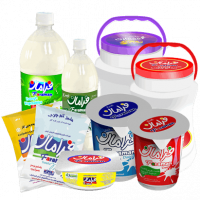Content
The result means that WMT had $1.84 of debt for every dollar of equity value. Lastly, inventory represents the company’s raw materials, work-in-progress goods, and finished goods. Depending on the company, the exact makeup of the inventory account will differ. For example, a manufacturing firm will carry a large number of raw materials, while a retail firm carries none.
Assets are typically listed as individual line items and then as total assets in a balance sheet. You will need to tally up all your assets of the company on the balance sheet as of that date. For instance, if someone invests $200,000 to help you start a company, you would count that $200,000 in your balance sheet as your cash assets and as part of your share capital. Noncurrent assets are long-term investments that the company does not expect to convert into cash within a year or have a lifespan of more than one year. QuickBooks Online automatically tracks and organizes your accounting data, allowing it to generate up-to-date balance sheet reports. You can even set up automated reporting and share your balance sheets with others.
Steps to Read the Balance Sheet of a Company
Their value may thus be wildly understated or just as wildly overstated. With a greater understanding of a balance sheet and how it is constructed, we can review some techniques used to analyze the information contained within a balance sheet. Non-current assets are assets that are not turned into cash easily, are expected to be turned into cash within a year, and/or have a lifespan of more than a year. They can refer to tangible assets, such as machinery, computers, buildings, and land. Non-current assets also can be intangible assets, such as goodwill, patents, or copyrights.
This account is derived from the debt schedule, which outlines all of the company’s outstanding debt, the interest expense, and the principal repayment for every period. A liquidity ratio of 2 means you have $2 in liquid assets for every $1 of current liabilities. The higher the ratio, the more liquid assets to cover your current debts. Most non-current assets reported on a balance sheet are shown with depreciation.
How Balance Sheets Work
Investors can use different ratios and formulas using the numbers on a balance sheet to determine a company’s financial well-being. These statements give an overview of a company’s operations and financial performance for the specified time period. Also, investors, analysts, and potential creditors can use these statements to understand how a company makes and uses its money. It is helpful for business owners to prepare and review balance sheets in order to assess the financial health of their companies.
- This is because long-term assets, like buildings, equipment, and furniture, are reported at their cost minus the Depreciation Expense amount that has already been transferred to the income statement.
- In this balance sheet, accounts are listed from least liquid to most liquid .
- Some businesses have higher and lower current ratios, depending on how they are financially structured.
- Preferred stock is assigned an arbitrary par value that has no bearing on the market value of the shares.
- In the balance sheet of Exide Industries , we don’t see any Short term of Long term borrowing.
- Adding total liabilities to shareholders’ equity should give you the same sum as your assets.
The long-term debt number on the balance sheet is an aggregate number, which pools all the debt issued by the company. The details of the figure are found in the notes section, which breaks down the debt by issuance. The note provides important details like maturity, interest rate, and other terms of debt. The information is essential to evaluate the capital structure and perform credit analysis if new debt needs to be issued.
Note
The shareholder’s equity section is essential from the point of view of valuation. Often, financial statements will include a separate statement detailing the changes in shareholder equity. It is the amount raised from construction bookkeeping equity holders by issuing shares in the business. Typical long-term financial liabilities include loans (i.e., borrowings from banks) and notes or bonds payable (i.e., fixed-income securities issued to investors).
- Some candidates may qualify for scholarships or financial aid, which will be credited against the Program Fee once eligibility is determined.
- If depreciation expense is known, capital expenditure can be calculated and included as a cash outflow under cash flow from investing in the cash flow statement.
- The makeup of a retailer’s inventory typically consists of goods purchased from manufacturers and wholesalers.
- The term balance sheet refers to a financial statement that reports a company’s assets, liabilities, and shareholder equity at a specific point in time.
Once they have this information, they can make wise decisions, such as paying down company debts instead of expanding during a costly, risky period of time. Whether the company has enough liquid assets to pay off its debts in the event of liquidation. Put more simply, the company’s assets should equal liabilities and shareholder equity.
Importance of balance sheets and how to use them
They show you where a company’s money came from, where it went, and where it is now. This brochure is designed to help you gain a basic understanding of how to read financial statements. Just as a CPR class teaches you how to perform the basics of cardiac pulmonary resuscitation, this brochure will explain how to read the basic parts of a financial statement. It will not train you to be an accountant , but it should give you the confidence to be able to look at a set of financial statements and make sense of them. Liabilities are any of the financial debts or obligations that a company has.
What is a simple way to explain balance sheet?
A balance sheet is a financial statement that contains details of a company's assets or liabilities at a specific point in time. It is one of the three core financial statements (income statement and cash flow statement being the other two) used for evaluating the performance of a business.
It helps boost the sales of the business as they can make sales to those customers who don’t have the money to pay upfront but will pay the money shortly. Current LiabilitiesCurrent Liabilities are the payables which are likely to settled within twelve months of reporting. They’re usually salaries payable, expense payable, short term loans etc. DepreciationDepreciation is a systematic allocation method used to account for the costs of any physical or tangible asset throughout its useful life. Its value indicates how much of an asset’s worth has been utilized.
It would also be helpful to read the Notes to Consolidated Financial Statements included in the 10-Ks supplied to the U.S. The upper acceptable limit is 2.00 with no more than 1/3 of debt in long-term liabilities. Includes the amount we have raised for a longer duration and thus forms a critical part of our capital structure. In this case, we have received payment from our customers, but we are yet to deliver the goods. So it becomes a short-term liability until the delivery of goods. Ajit – You need to look at the consolidated financial statement.
- Again, shareholders’ equity is most useful when evaluating value stocks and for comparing the valuations of stocks in similar industries.
- Assets may be further broken down into both long-term and short-term assets.
- It provides a snapshot of a company’s finances as of the date of publication.
- If these two sides don’t balance, there has been a mistake in the company’s accounting, or transactions are not properly recorded.






